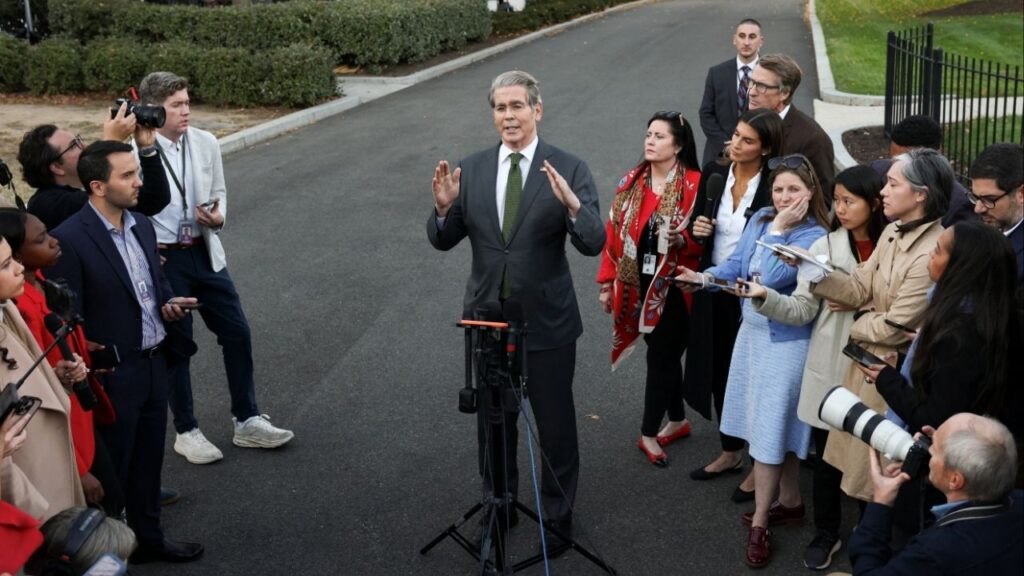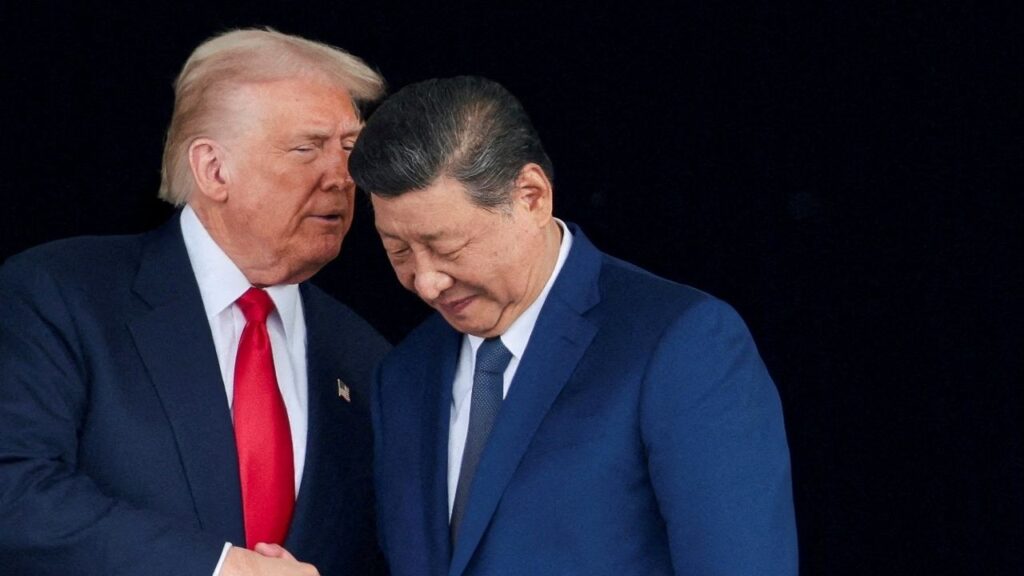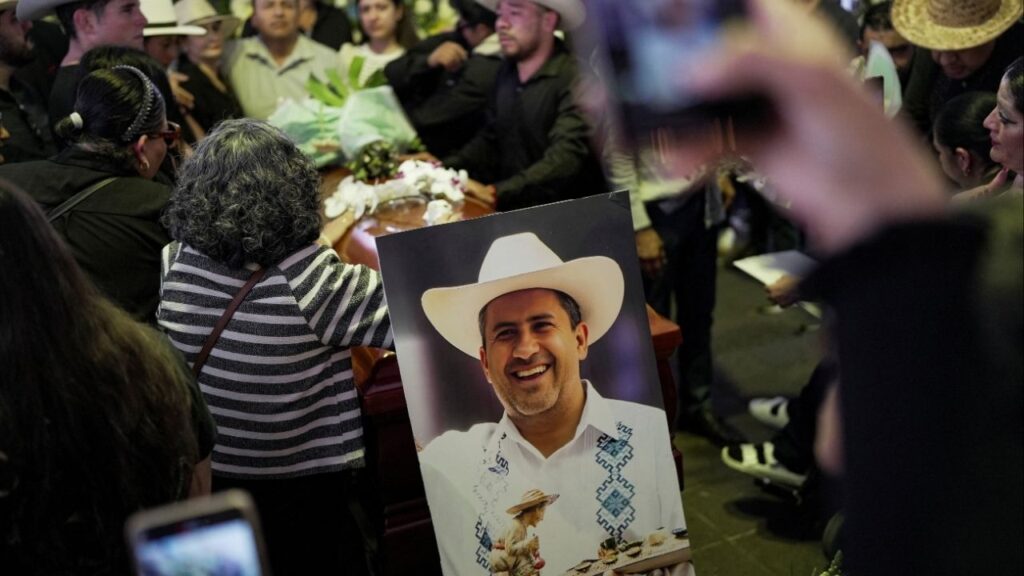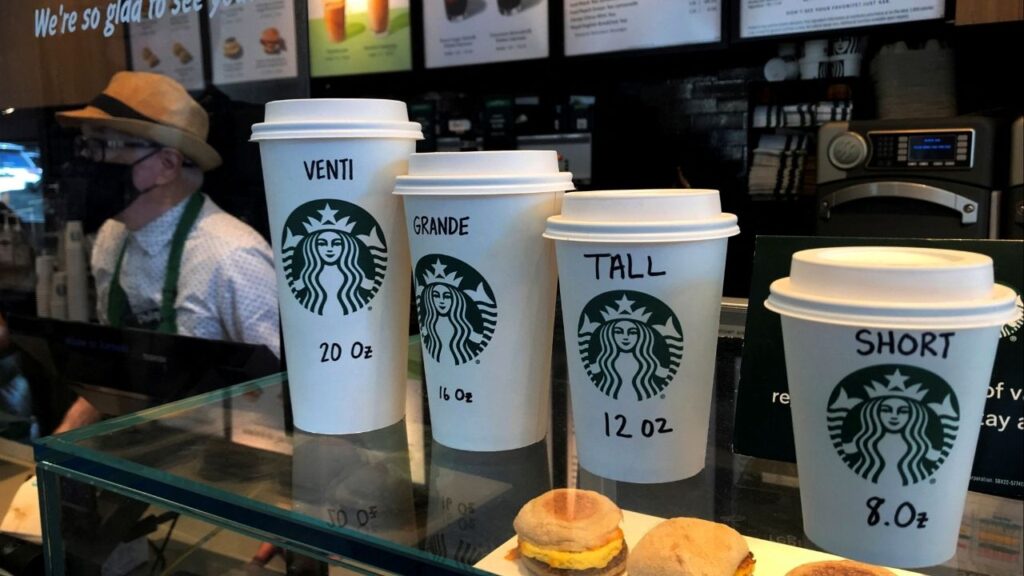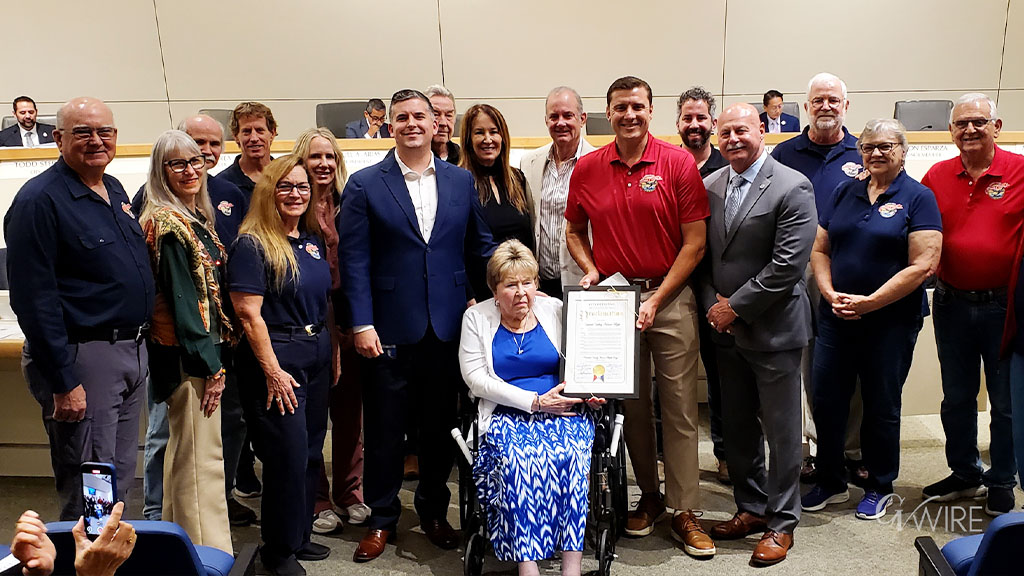President Trump's proposed tariffs on Canadian and Mexican imports threaten to disrupt the North American auto industry, potentially raising car prices and damaging supply chains. (AP Pool)

- Trump's proposed 25% tariffs on Canadian and Mexican imports could disrupt $300 billion in annual U.S. automotive trade.
- Experts warn of potential recession in Canada and Mexico, with stagnant growth in the U.S. if tariffs are implemented.
- Automakers face challenges as tariffs could hinder the transition from gasoline-powered to electric vehicles.
Share
DETROIT — President Donald Trump’s trade wars threaten to claim a casualty on the home front: the American auto industry.
If the president goes ahead with 25% taxes on imports from Canada and Mexico on Tuesday, he will disrupt more than $300 billion in annual U.S. automotive trade with its two neighbors, wreck supply chains that have been operating for decades and likely push up the already-forbidding price of new cars.
The tariffs pose an “existential” threat to North American auto production, said David Gantz, a fellow at Rice University’s Baker Institute for Public Policy. They will push up “the cost of everything that’s imported from Mexico or Canada that goes into a car assembled in the U.S.”
Kelley Blue Book says Trump’s tariffs could raise the U.S. price of the average new car – already approaching $49,000 – by $3,000 or more. The price of some full-size pickup trucks could shoot up by $10,000.
The economic pain would intensify if Canada and Mexico counterpunched with tariffs on American exports.
“The economic impact of a sustained 25% tariff on Canada and Mexico would be severe, with full tit-for-tar retaliation likely to push Canada and Mexico into a recession and the U.S. to a point of stagnant growth,” Andrew Foran of TD Economics wrote. Foran estimates that 25% tariffs would push down auto sales by 13.6% a year in Canada and 10.6% in the United States.
Related Story: Trump to Impose New Tariffs Starting Tuesday on Mexico, Canada, and China
Trump’s Tariffs Would Upend North American Auto Supply Chains
Since 1965 — when the U.S. and Canada eliminated tariffs on each other’s autos and auto parts — North America has turned into an integrated auto manufacturing powerhouse. Mexico was brought into the fold by a 1994 regional trade pact and another one negotiated by Trump himself in 2020.
“The fact that you can tap relatively cheap steel and aluminum from Canada, that you can use the relatively low-cost labor in Mexico to assemble cars, and that you can leverage the high tech expertise and technology of the United States together, makes North America an incredibly competitive place to build automobiles,” said Brett House, a professor at Columbia University’s business school.
Much of the production has moved to Mexico. Ford, for example, manufactures the small Bronco Sport SUV and Maverick pickup in Sonora in northwestern Mexico. Stellantis makes the Jeep Compass and Wagoneer S at a plant in Toluca, west of Mexico City, which has been in operation since 1968. General Motors turns out GMC and Chevrolet pickups at a plant in Silao in central Mexico.
Just over half the 8 million cars and light trucks the United States imported last year came from Mexico (No. 1 at almost 3 million) and Canada (No. 4 at 1.1 million). Canada and Mexico are also the top two foreign markets for U.S.-built cars and light trucks, accounting for 53% of America’s auto exports.
By taxing Canadian and Mexican imports, most of which has been entering the U.S. duty free, Trump would be lobbing an explosive into that elaborate manufacturing network.
The Costs and Red Tape Would Pile Up
A White House official, who spoke on condition of anonymity to discuss details of the tariff plan, said the taxes would apply each time goods cross the border from Mexico or Canada. That means the costs would pile up as auto components traveled from factories in the United States to Mexico or Canada and back again. So would the red tape: “It’s an administrative and bureaucratic nightmare to keep track of things,” Gantz said.
What’s more, the 25% tariffs on Canada and Mexico would come atop higher taxes Trump intends to impose on foreign steel and aluminum starting March 12. Trump is removing exemptions on the metals tariffs he imposed in his first term — 25% on steel and 10% on aluminum — and raising the levy on aluminum to 25%. That means U.S. importers, including auto companies, would pay 50% duties on steel and aluminum from Canada and Mexico, big sources of the metals.
“You’re talking about the material costs going up every time (a part) goes into one market and comes back,” said K. Venkatesh Prasad, senior vice president of research at the Center for Automotive Research.
The higher costs would take a toll. A decade ago, Prasad said, the lowest-earning 20% of American consumers couldn’t afford a new car. Already, he said, “the bottom 40% of the population is not able to afford a new vehicle.”
Ford CEO Jim Farley has complained that “so far what we’re seeing is a lot of cost and a lot of chaos.”
General Motors CEO Mary Barra said last month at the Wolfe Research auto industry conference that GM has been “doing scenario planning and look at what at the different things we can change, we can move, we can respond.” She expressed confidence that company can find ways to “mitigate” the effect of the tariffs. Stellantis chairman John Elkann recently said he thinks the administration’s policies will boost American jobs and manufacturing.
Trump’s trade war comes at an awkward time for automakers. They’re trying to shift from gasoline-powered to electric vehicles, using revenue generated from selling conventional cars to finance EV investments, Prasad said, so the tariffs could hurt sales and limit the money available for the EV transition.
Why Is Trump Doing This?
Trump insists that the hefty hit to imports from Canada and Mexico aren’t about trade; they’re about slowing the flow of undocumented immigrants and fentanyl across U.S. borders.
“We cannot allow this scourge to continue to harm the USA, and therefore, until it stops, or is seriously limited, the proposed TARIFFS scheduled to go into effect on MARCH FOURTH will, indeed, go into effect, as scheduled,” Trump wrote Thursday in a post on his social media platform Truth Social.
Canada wouldn’t seem to be an especially important source of fentanyl: U.S. customs agents seized just 43 pounds of fentanyl at the Canadian border last year, versus the 21,100 pounds at Mexico’s.
Many analysts suspect that Trump has another goal: The 2020 U.S.-Mexico-Canada Agreement he negotiated in his first term comes up for renewal next year.
Although the president characterized the USMCA as a victory and a big improvement over the 1994 pact it replaced, it failed to reduce America’s trade deficits with Canada and Mexico. In fact, they’ve gotten bigger. (In Canada’s case, that’s largely because of surging energy exports that the American Midwest and Northeast rely on.)
So he is likely to seek revisions meant to ensure that more production — specifically auto production — is done in the United States, not just North America. The tariffs could give him leverage to pressure Canada and Mexico into accepting the USMCA changes he wants.
In the meantime, writes TD Economics’ Foran, “the North American auto industry should still prepare itself for a prolonged period of elevated trade uncertainty and potential trade disruptions.”
____
Wiseman reported from Washington.








